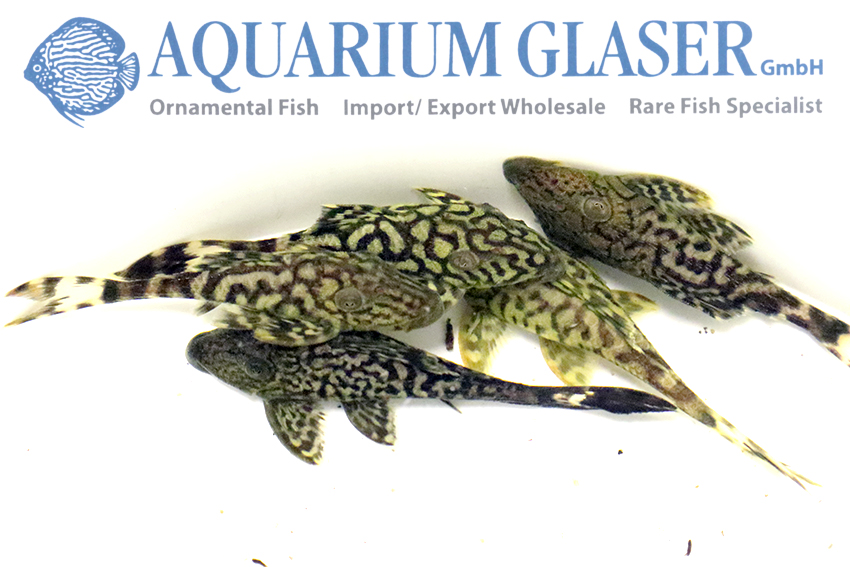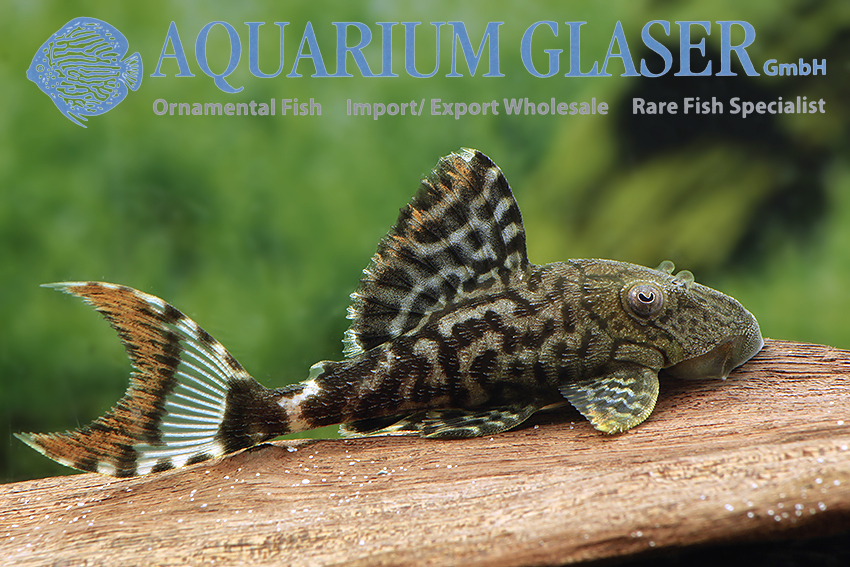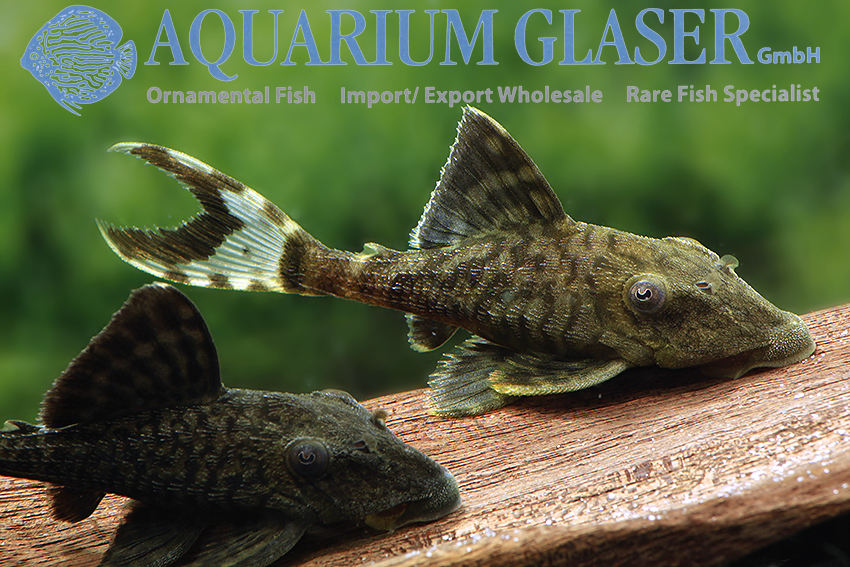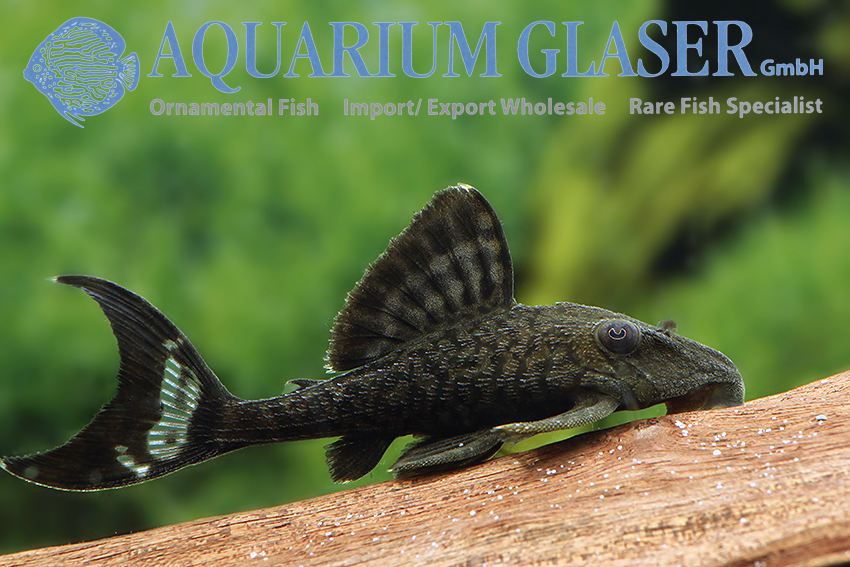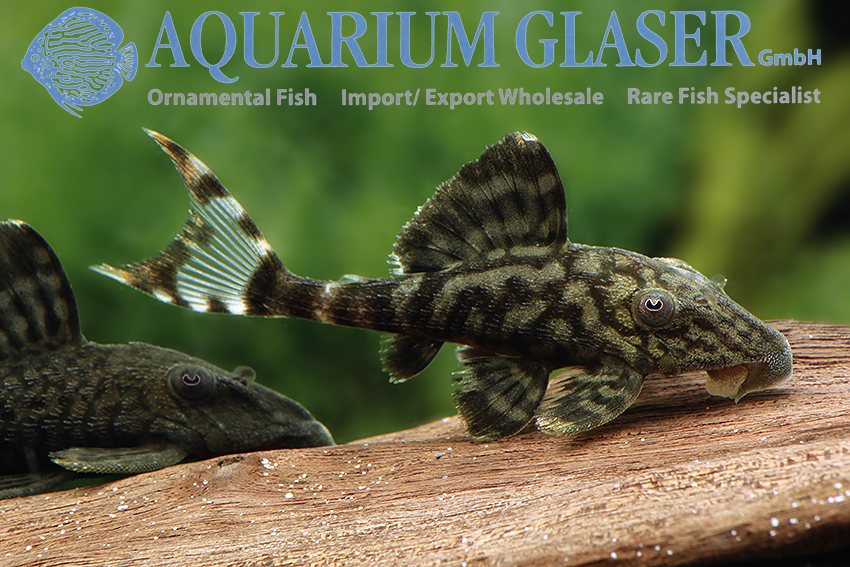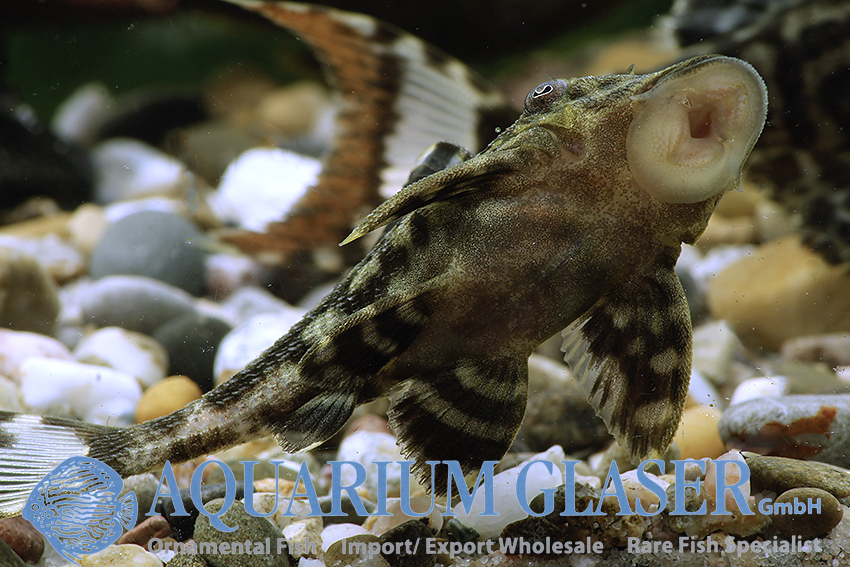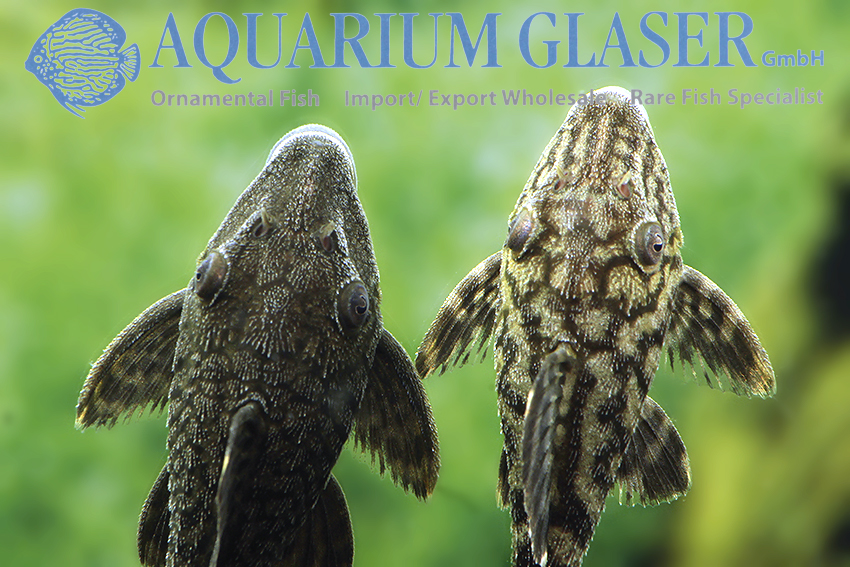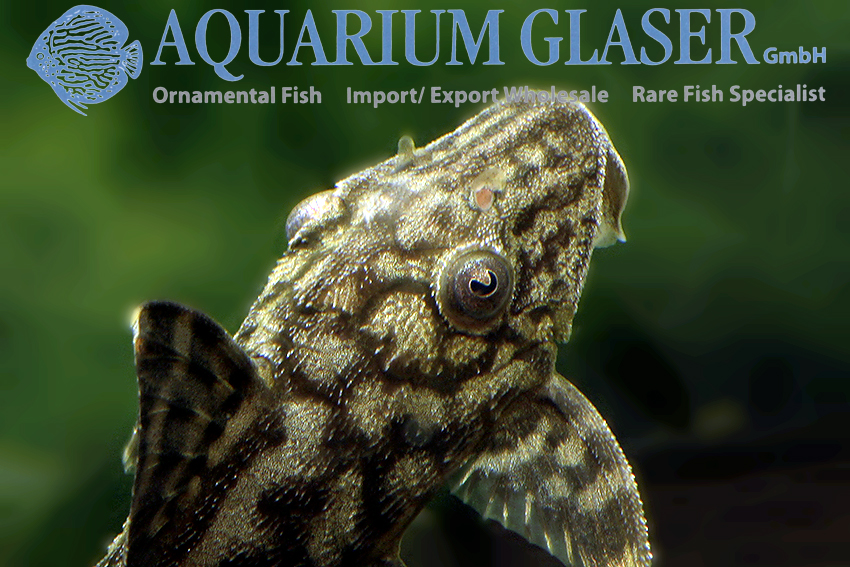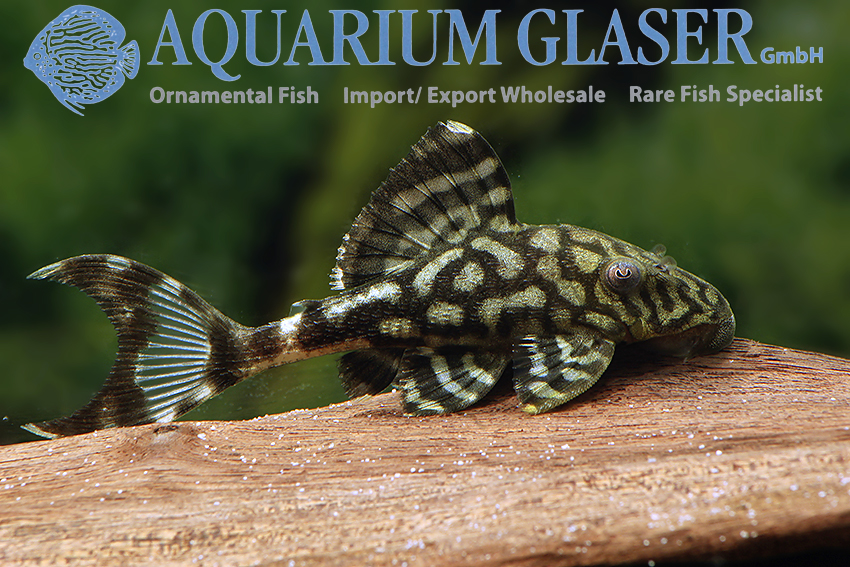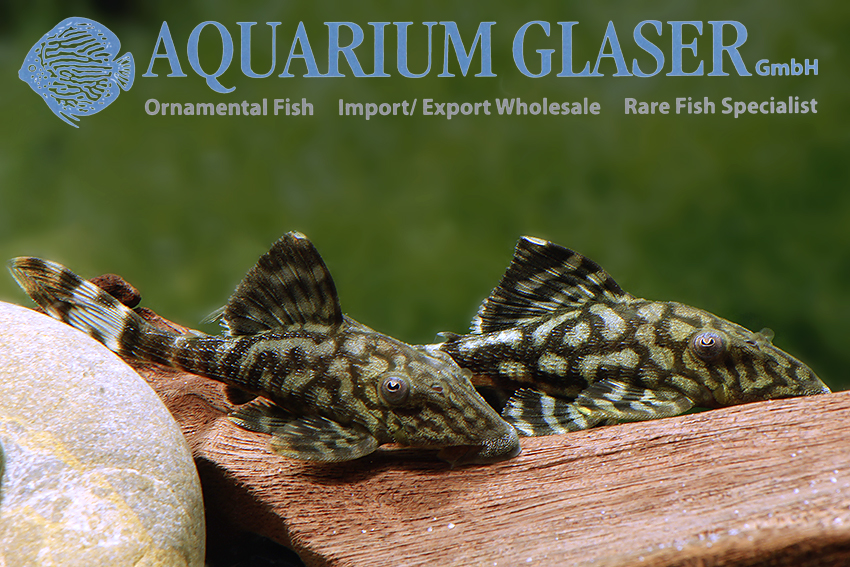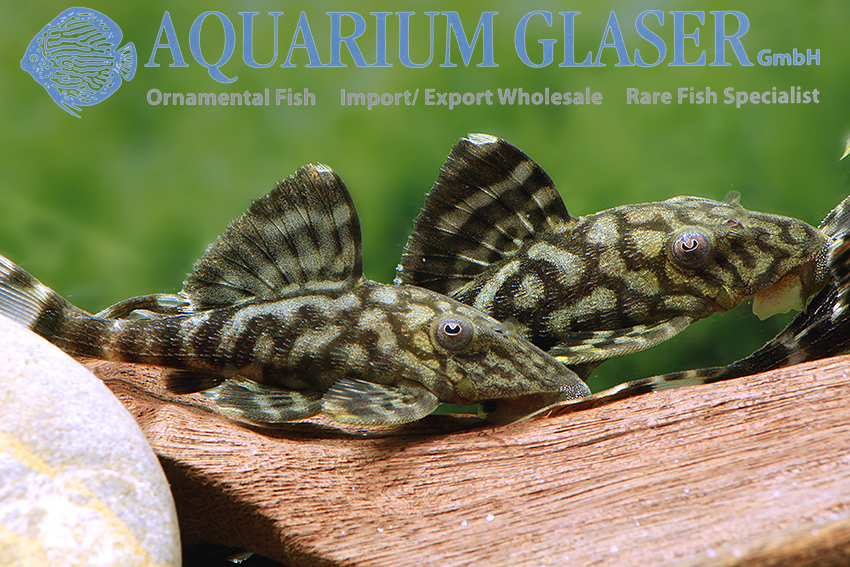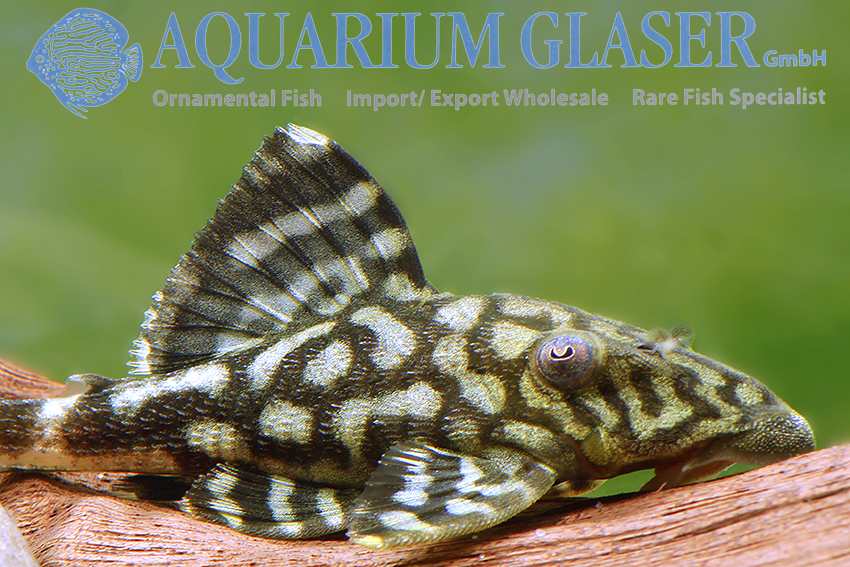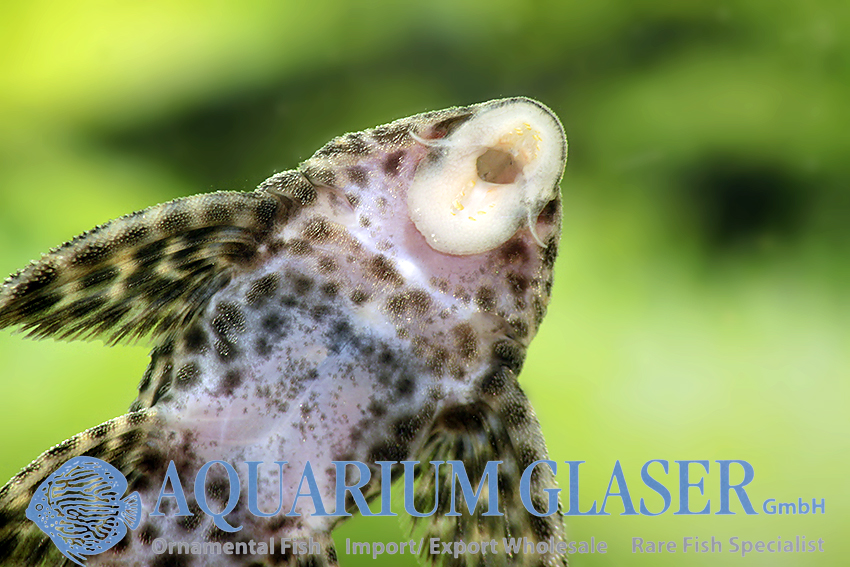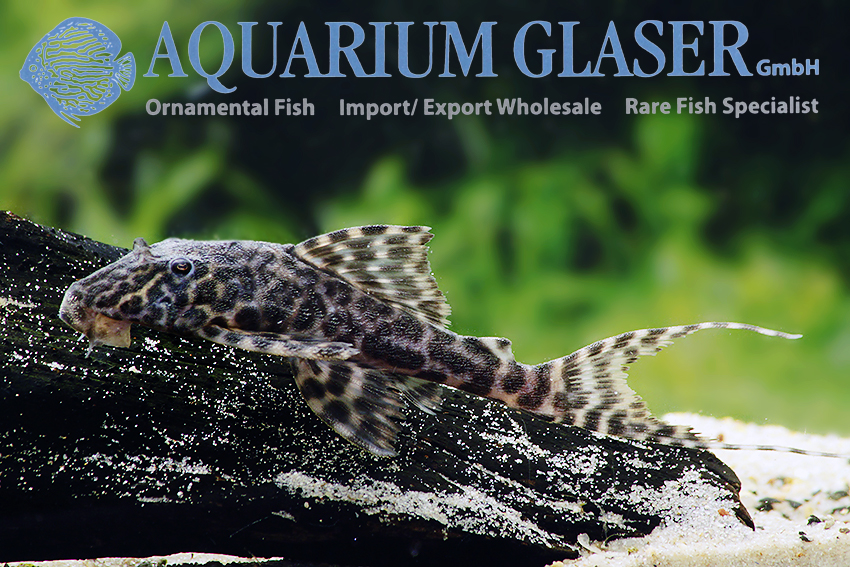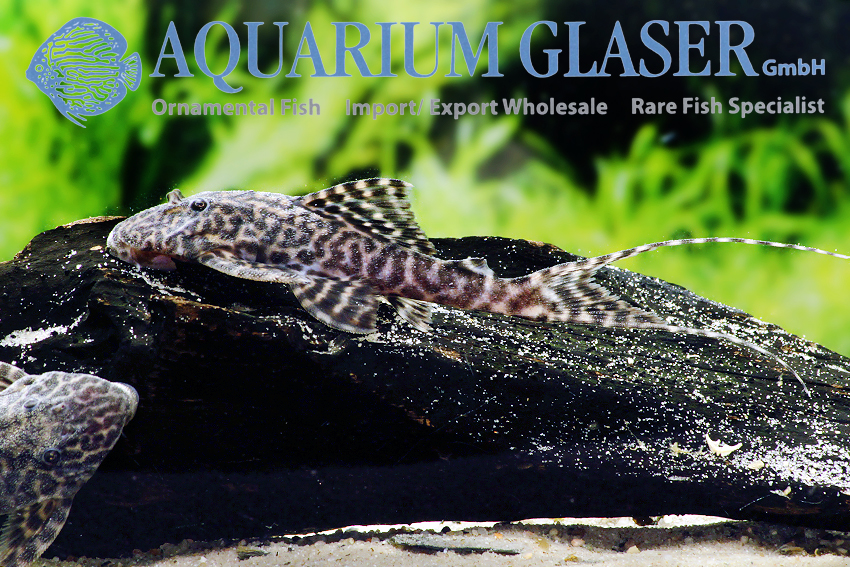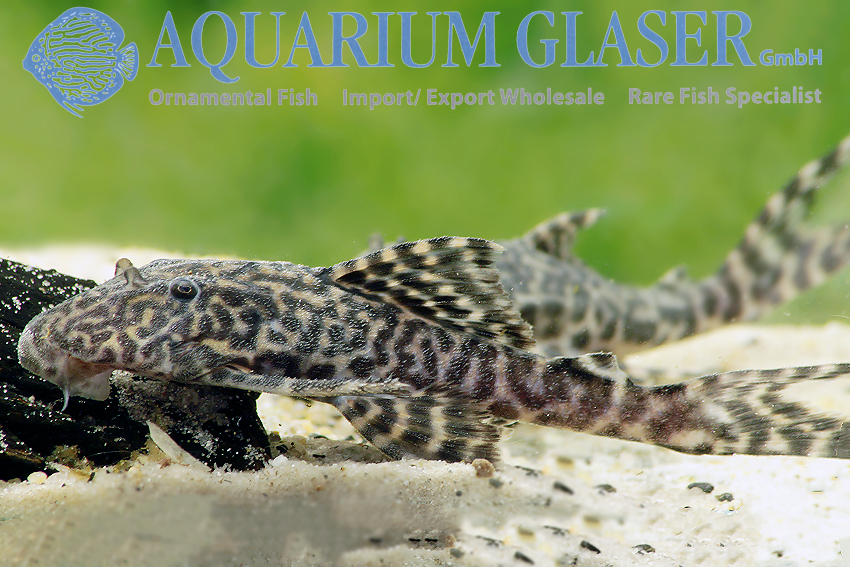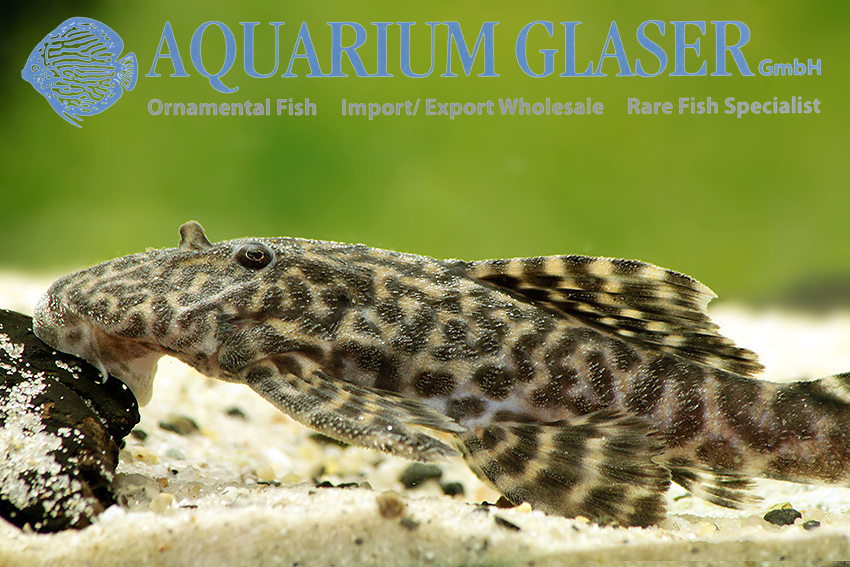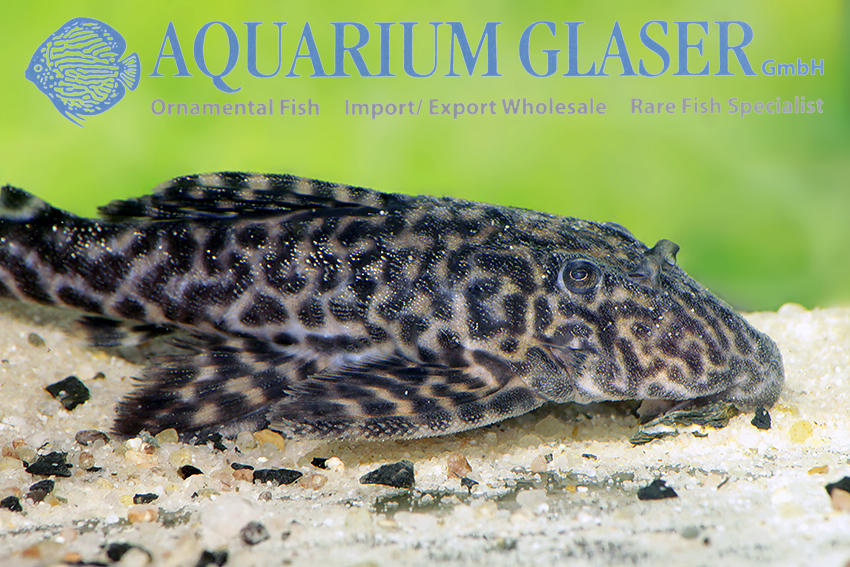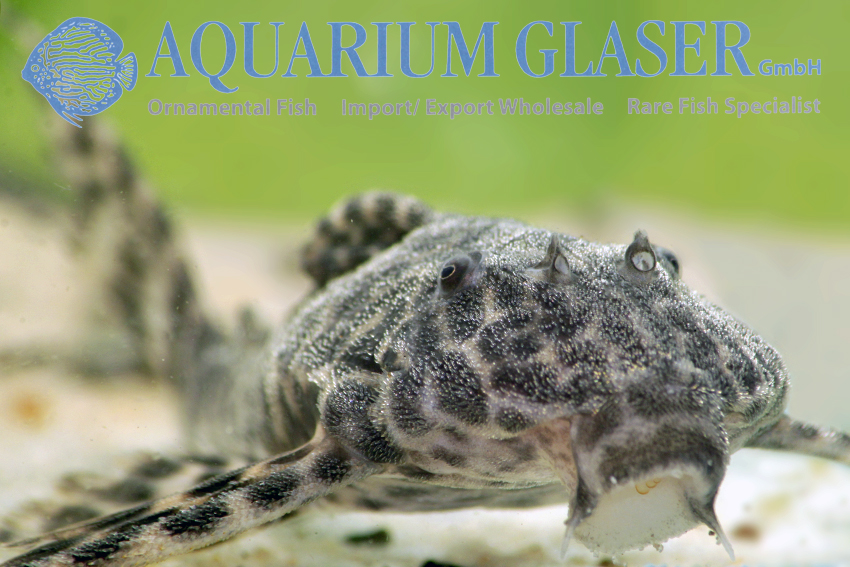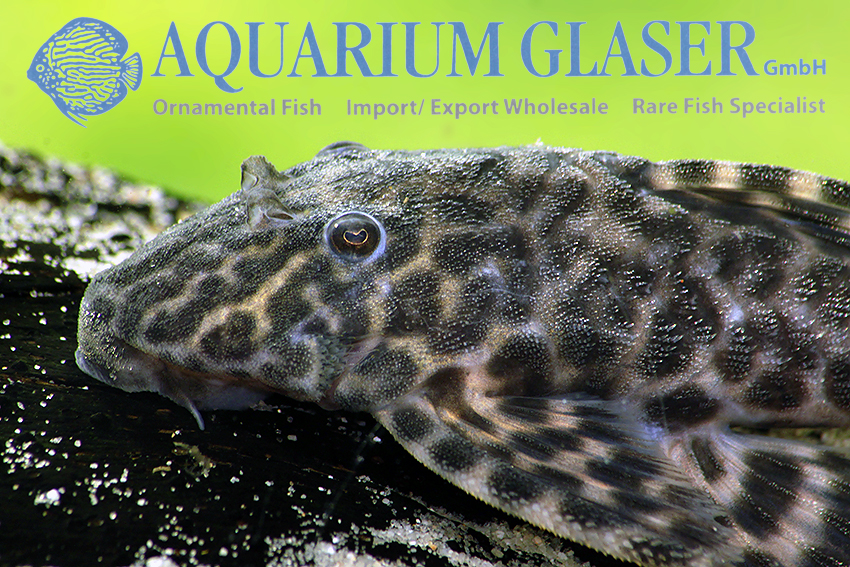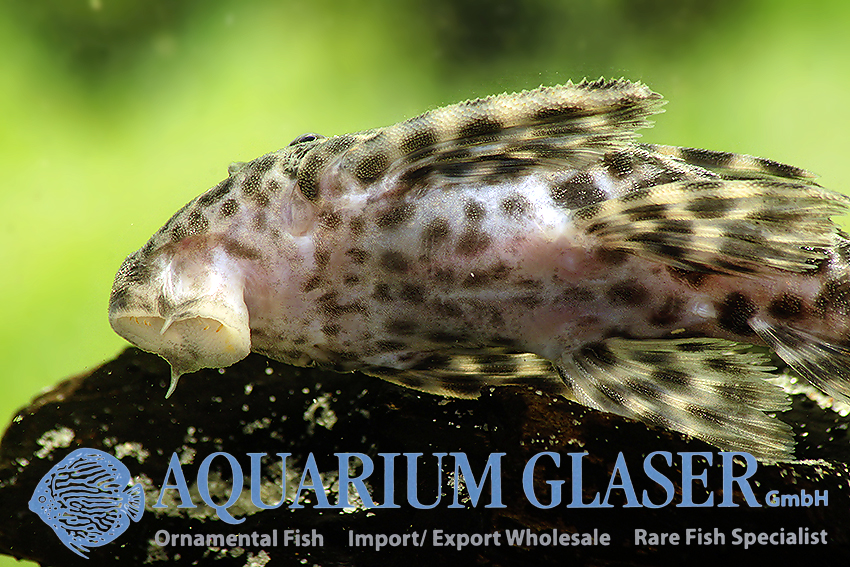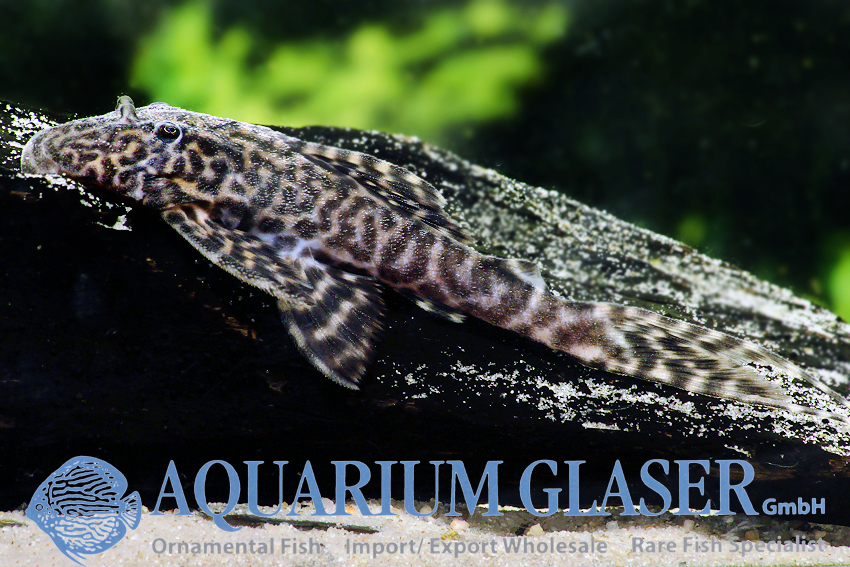Among the largest loricariid catfish are some of the wood-eating Panaque species. Panaque schaeferi is one of them, the species will certainly grow to about 60 cm long. Since P. schaeferi was described on the basis of adult specimens, the assignment to the young animals belonging to it has never been scientifically confirmed. However, it is assumed that the Panaque from Peru, first named as L90c and later as L203, is the juvenile form of P. schaeferi. The adult P. schaeferi has received the number LDA 65.
Usually the juveniles of L203/L90c do not exhibit a spectacular pattern. Typical for the L90 relationship is a bright “window” in the colouring at the base of the caudal fin, which many of the juveniles show, but which disappears in adult fish. L203/L90c has – in contrast to L90, which is probably identical with the species Panaque bathyphilus – no long extended caudal fin filaments.
Recent shipments of juvenile P. schaeferi, which originates from the entry of the Rio Ucayali into Peru, contain exceptionally beautiful, very colourful individuals. The photographed animals have a size of 6-8 cm. Since each of the animals is drawn differently (some are also “normal” L-90c-typical), we assume individual colour variations and not a new collecting site variation or even new L-numbers.
For our customers: the animals have code 26480-L 203-1 (4-5 cm) or 26480-L 203-2 (6-8 cm) on our stocklist. Please note that we only supply wholesale.
Text & photos: Frank Schäfer





